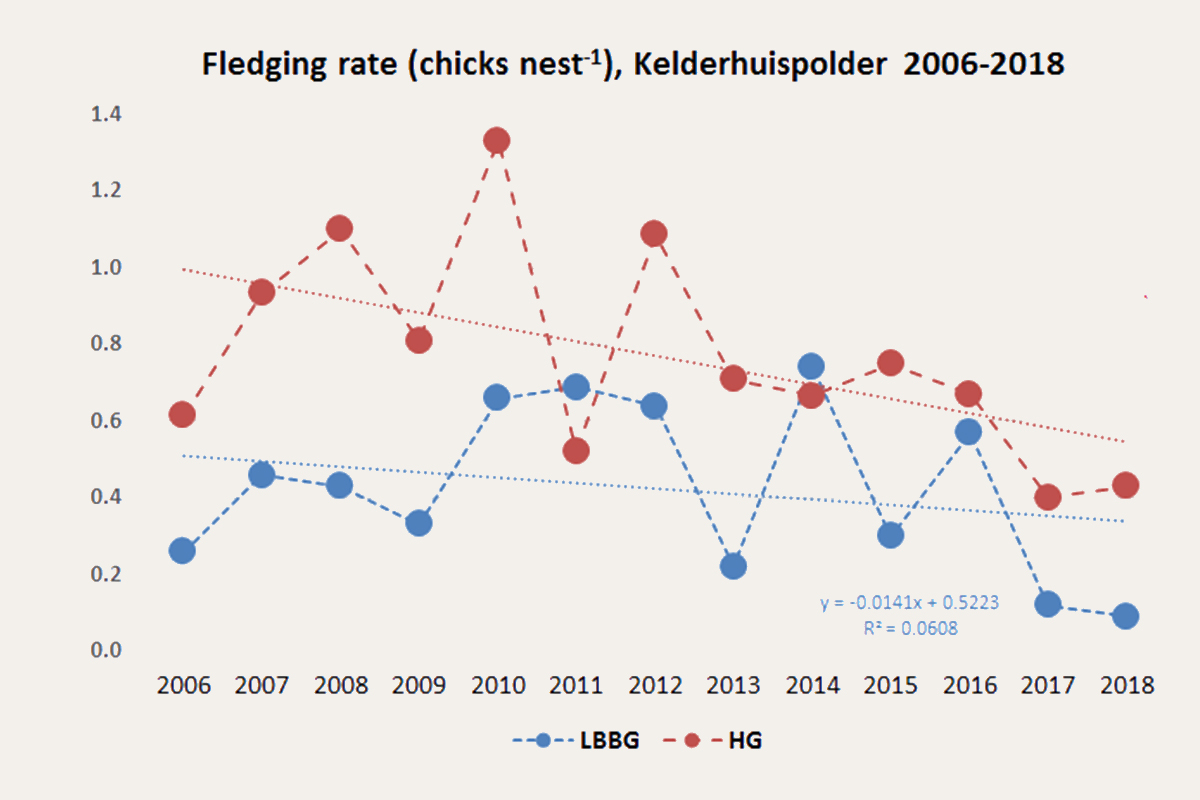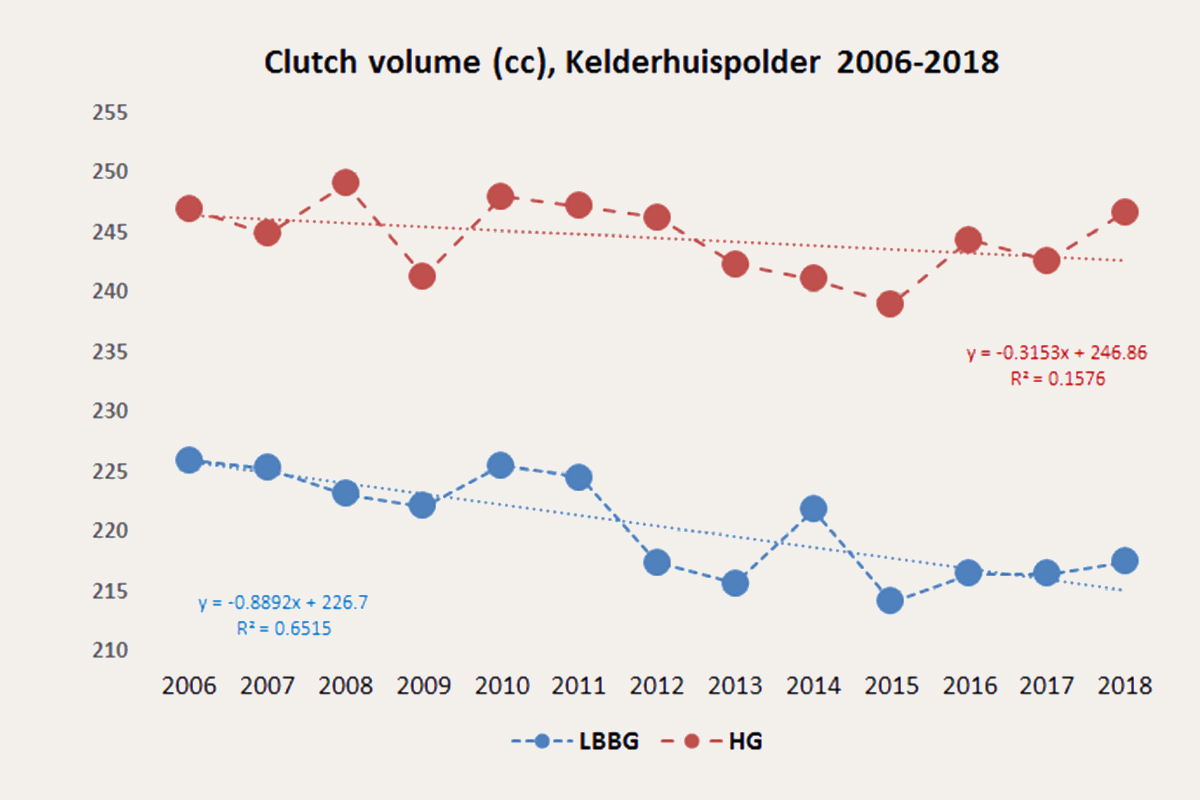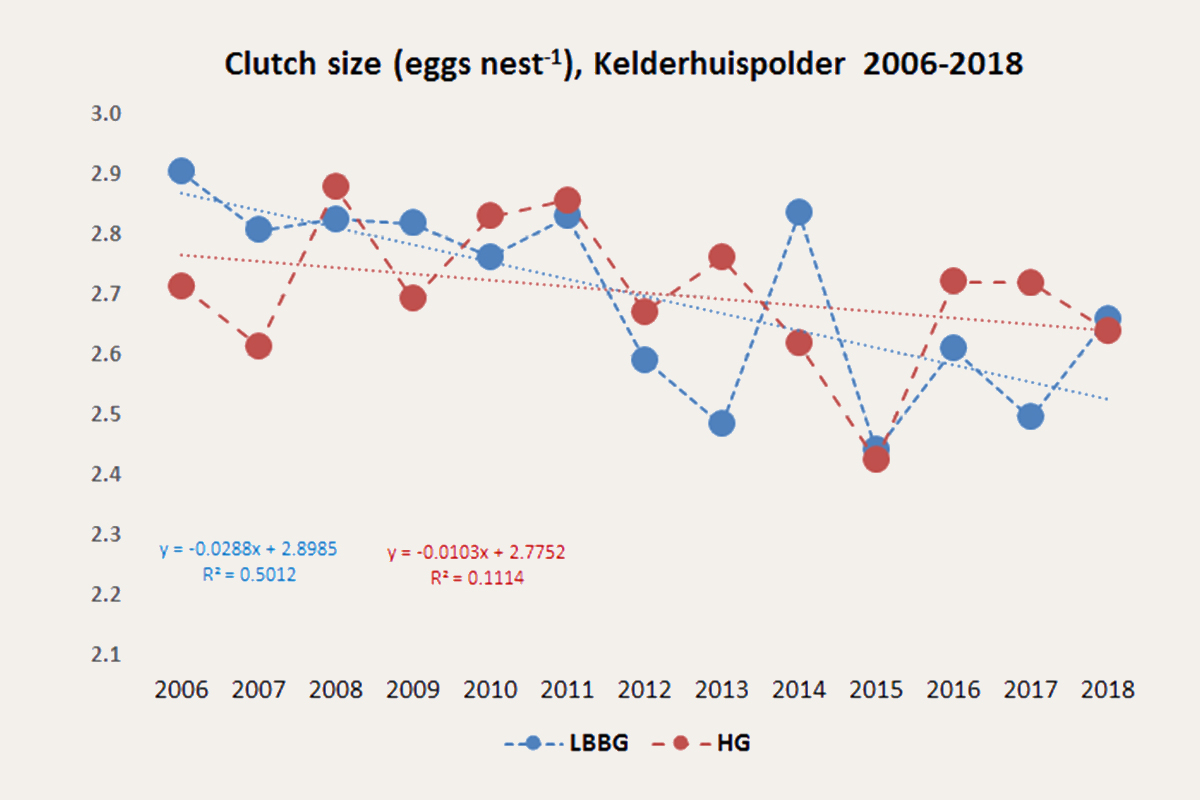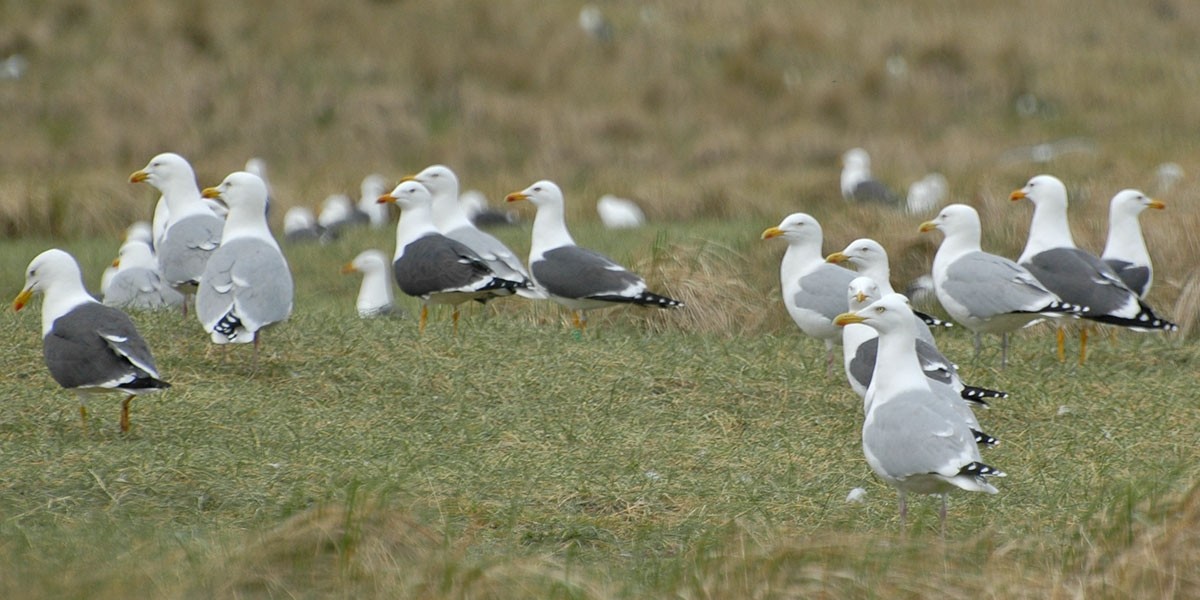Breeding birds

Fledglings per nest 2006-2018
Gull rely on Wadden Sea for breeding
There is no dispute about the international importance of the Wadden Sea for myriads of migratory waterbirds. Most these birds breed further to the north and winter further to the south: for them, the Wadden Sea is their stop-over. Some birds, however, rely on the Wadden Sea for breeding. The Herring Gull and the Lesser Black-backed Gull, for example. The Lesser Black-backed Gull is a newcomer; with a first breeding attempt on Terschelling in 1926. Following a long period with very small numbers, the population exploded in the 1970s and 1980s. Herring Gulls are with us for as long as we care to remember. Today, colonies of large gulls, each numbering thousands of breeding pairs, can be found on all Wadden Sea islands and the colonies are typically mixed: sympatric breeding. The two gull species don’t seem to do that well anymore, however, after many years of prosperity. Herring Gull numbers have declined and Lesser Black-backed Gulls fledge too few chicks to compensate for the annual mortality of adults. What is the problem?
In 2006, we started a comprehensive research project in which the breeding biology, foraging ecology and demography of both species were investigated in a colony on Texel. Novel (GPS) tracking techniques were used to figure out where the birds were foraging, thousands were colour-ringed to assess annual mortality (adults) and recruitment (juveniles, several years after fledging) rates. We expected to find evidence for competition on the foraging grounds, even though the Herring Gull was known to forage more in the Wadden Sea itself and the Lesser Black-backed Gull commonly in the North Sea coastal zone. This project is now running for 11 consecutive (breeding) seasons and a wealth of data has been generated, answering several questions, but leaving us in the mist with others.

Clutch volume (cc) 2006-2018
Given natural levels of adult annual survival (~90% for long-lived species as these large gulls), the reproductive success should be in the order of magnitude of 0.8 chicks per nest fledged in any given year to at least stabilize the populations. It appeared that the Lesser Black-backed Gulls almost never got anywhere close to that number. In fact, many adults skipped breeding every other season, reducing the reproductive success of the population even more. Herring Gulls performed fine in some years, but never very good (as in some new urban colonies!); the confounding factor was the suppressed annual survival of adults as well as immatures. The survival of adults of the Lesser Black-backed Gull was fine, about 91% per annum. We found that the two species compete much less for food than we thought in advance: foraging grounds barely overlapped and the prey spectrum was very different (Herring Gull are largely molluscivores, Lesser Black-backed Gulls are primarily piscivores). Yet, prey availability seemed insufficient (or close to that) in both species. Starvation events occurred, affecting chick growth, and cannibalistic outbreaks were grotesque in some years. An unexpected finding was the significant decline in clutch volumes (1 cc per year for 3-egg clutches) that we found in Lesser Black-backed Gulls. If egg volume would mirror parental (female) condition in the pre-breeding phase, this is another indication that food availability is the key factor explaining current negative trends.
The studies will continue, but with a stronger emphasis on prey availability, foraging locations and resource size (standing stocks). Both species have developed in response to anthropogenic impacts on the marine ecosystem, and their fate may be strongly coupled with our own behaviour and welfare.

Clutch size (eggs nest-1) 2006-2018
Another measure is clutch size (number of eggs per breeding attempt, the natural maximal clutch these species lay is three eggs). Not only did clutch size decline over time, notably so in Lesser Black-backed Gulls, but also did we find a negative correlation between clutch size and laying date: the later the nest was initiated, the fewer eggs were produced. In late seasons, it is also possible that fewer birds decided to breed at all, and the remainder was thus found to undertake a less demanding breeding attempt. Late breeding always led to low reproductive success, so that the penalty to do so is apparently severe. There is selective pressure on breeding ‘in time’, and that is apparently as early as possibly can.
Time series

Long-term ecological time series Wadden Sea

A gull is flying more than 300 kilometers on one day from Texel to Amsterdam to find food for her hungry children. Kees Camphuysen in the VPRO series 'The Netherlands from above'
Monitoring MSC Zoe plastics in gull pellets
During the night of 1st to 2nd January 2019, during a north-western storm, the container ship MSC Zoe lost at least 345 containers on the shipping route north of the Wadden Islands.
Rijkswaterstaat (RWS) wants research to be carried out into the possible consequences of the container disaster on the ecosystem of the North Sea and Wadden Sea.The objective of this research is to collect plastics and organisms registered in 2019 that may have ingested plastics in conjunction with existing programmes.
the requested investigation includes:
Plastics in pellets and bird faeces, in combination with ongoing research on gulls